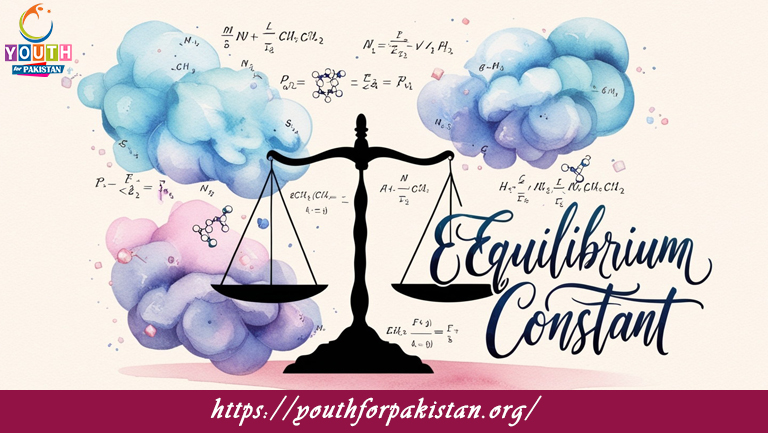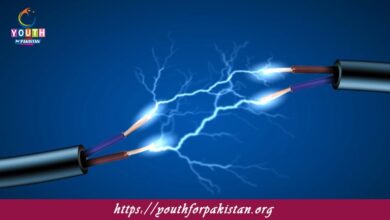Equilibrium Constant MDCAT MCQs with Answers

Welcome to the Equilibrium Constant MDCAT MCQs with Answers. In this post, we have shared Equilibrium Constant Multiple Choice Questions and Answers for PMC MDCAT 2024. Each question in MDCAT Chemistry offers a chance to enhance your knowledge regarding Equilibrium Constant MCQs in this MDCAT Online Test.
If the concentration of products is greater than the concentration of reactants, the equilibrium constant K will be:
a) Less than 1
b) Greater than 1
c) Equal to 1
d) Unpredictable
In a reaction at equilibrium, the value of the equilibrium constant:
a) Changes with temperature
b) Remains constant
c) Depends on pressure only
d) Increases with concentration
The equilibrium constant expression for a reaction where no solid or liquid is involved is:
a) The same as for reactions in which solid or liquid states are present
b) Based on partial pressures
c) Based on concentration of the reactants and products
d) Based on concentrations and volumes of gases only
The equilibrium constant for a reaction is given as 4. What does this indicate?
a) The reaction favors the reactants
b) The reaction is at equilibrium
c) The reaction favors the products
d) There is no equilibrium
If a reaction has a very small equilibrium constant (K ≪ 1), it indicates that:
a) The products are favored
b) The reactants are favored
c) The reaction is at equilibrium
d) The reaction proceeds to completion
For a reaction at equilibrium, if the concentration of the reactants is increased, the equilibrium constant:
a) Increases
b) Decreases
c) Remains unchanged
d) Becomes zero
The equilibrium constant Kp is used for reactions involving:
a) Only liquids
b) Only gases
c) Only solids
d) Solids and liquids
If the reaction is reversed, what happens to the equilibrium constant?
a) It stays the same
b) It is doubled
c) It is inverted
d) It is squared
The equilibrium constant Kc for a given reaction is based on:
a) Temperature
b) Volume
c) Concentration of gases only
d) Concentration of reactants and products in solution
If the value of Kc is large (Kc > 1), it means that:
a) The reaction is not proceeding towards equilibrium
b) The reactants are favored at equilibrium
c) The products are favored at equilibrium
d) The reaction has not yet reached equilibrium
The equilibrium constant is dependent on:
a) The concentration of reactants
b) The concentration of products
c) The temperature
d) Both a and b
If the reaction is at equilibrium and the temperature is increased, the equilibrium constant:
a) Increases
b) Decreases
c) Remains the same
d) Depends on the direction of the reaction
In a reaction at equilibrium, the ratio of the concentrations of products and reactants:
a) Varies with temperature
b) Is always 1
c) Is constant at all temperatures
d) Depends only on the pressure
The equilibrium constant for the reaction is 1. What does it imply?
a) Products and reactants are present in equal amounts
b) The reaction favors the products
c) The reaction is at equilibrium but favors the reactants
d) The reaction goes to completion
If the volume of a container holding a gaseous equilibrium reaction is halved, what will happen to the equilibrium constant?
a) It will double
b) It will stay the same
c) It will decrease
d) It will become zero
The equilibrium constant for a reaction can be calculated from:
a) The reaction rate
b) The concentrations of reactants and products at equilibrium
c) The volume of the reaction vessel
d) The pressure of reactants and products
Which of the following does NOT affect the value of the equilibrium constant?
a) Temperature
b) Pressure
c) Concentration of reactants and products
d) The nature of the reaction
If the concentration of a reactant is decreased in a reaction at equilibrium, the equilibrium will shift:
a) Towards the reactants
b) Towards the products
c) In no particular direction
d) To the right
What happens to the equilibrium constant when a catalyst is added to the reaction?
a) It increases
b) It decreases
c) It remains unchanged
d) It becomes zero
For a reaction at equilibrium, if the pressure is increased, the equilibrium constant:
a) Increases
b) Decreases
c) Remains unchanged
d) Shifts to the right
If a system at equilibrium is disturbed by changing temperature, the system will:
a) Shift to counteract the change
b) Remain unchanged
c) Proceed in the direction that increases the temperature
d) Change the equilibrium constant value
If you are interested to enhance your knowledge regarding Physics, Chemistry, Computer, and Biology please click on the link of each category, you will be redirected to dedicated website for each category.





